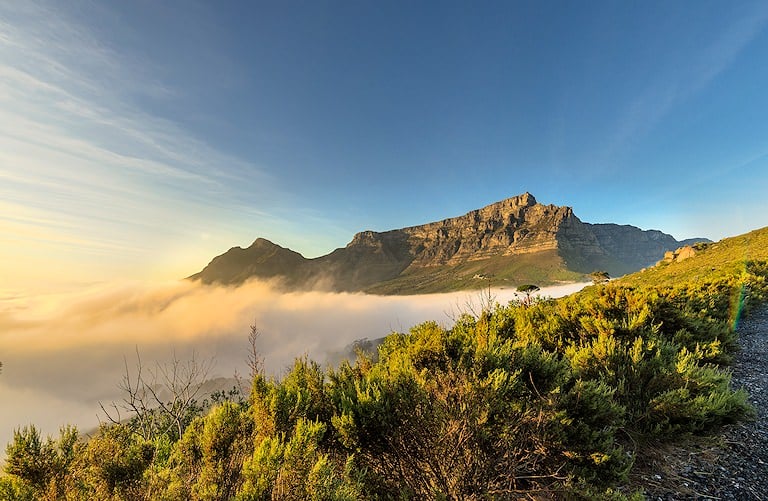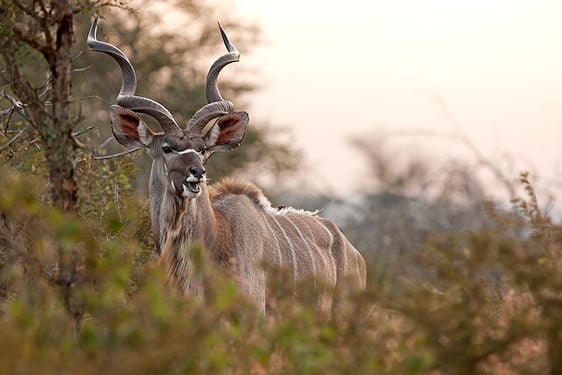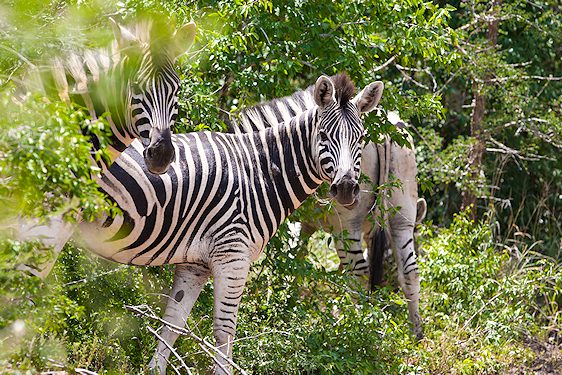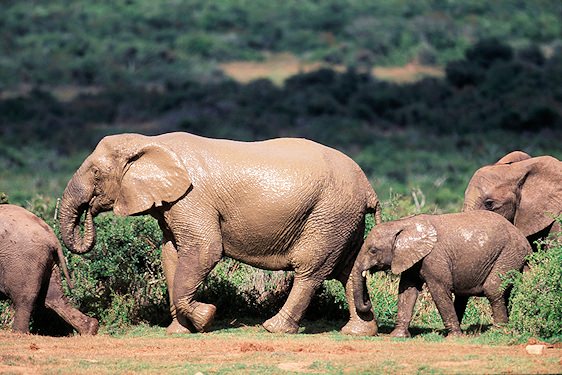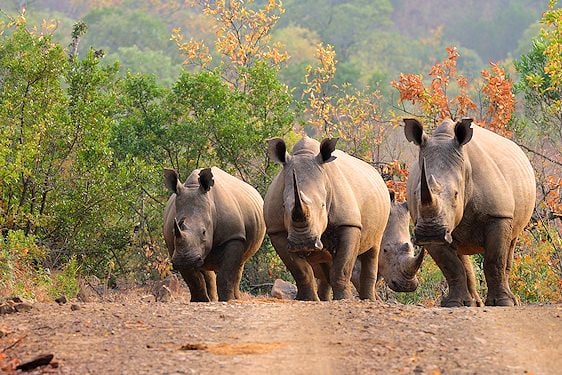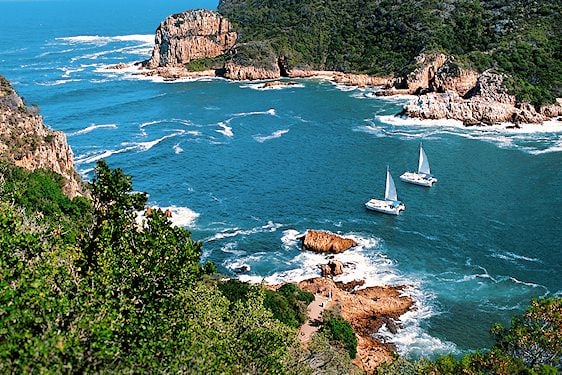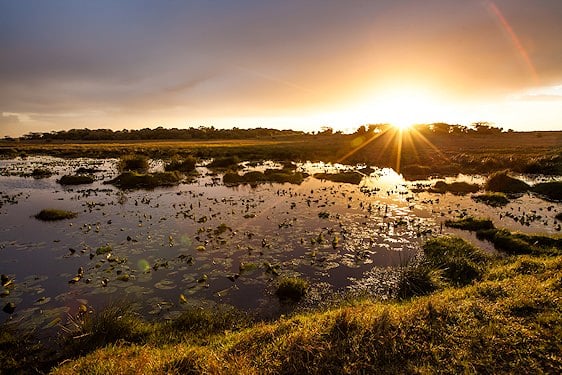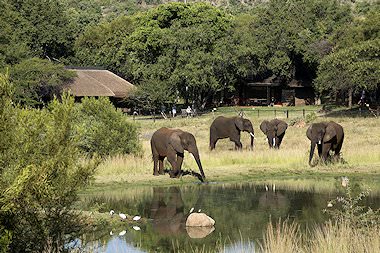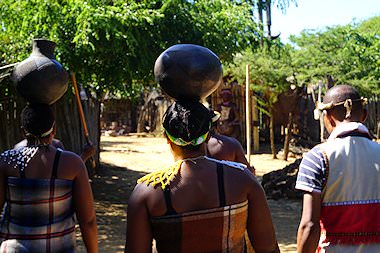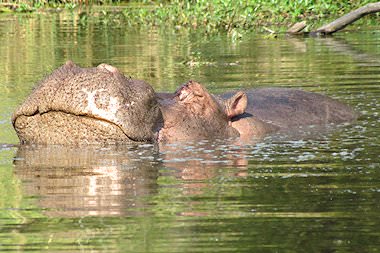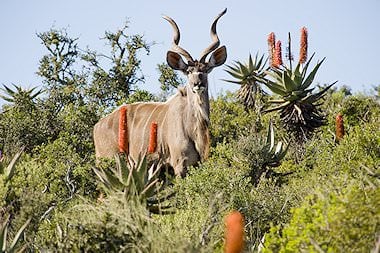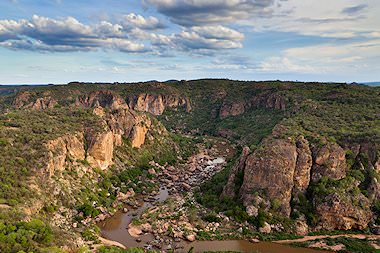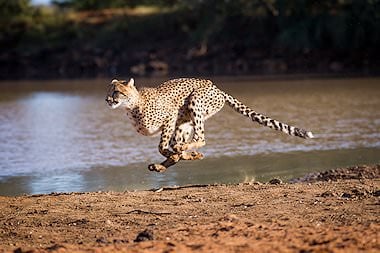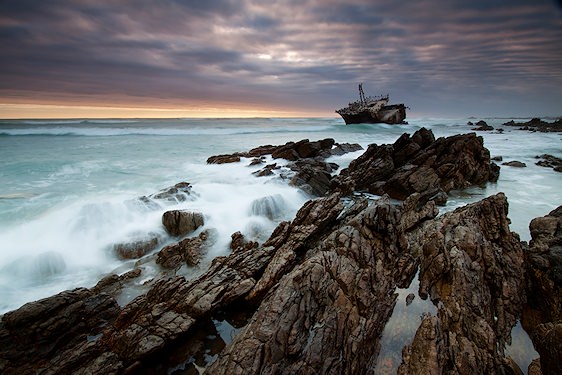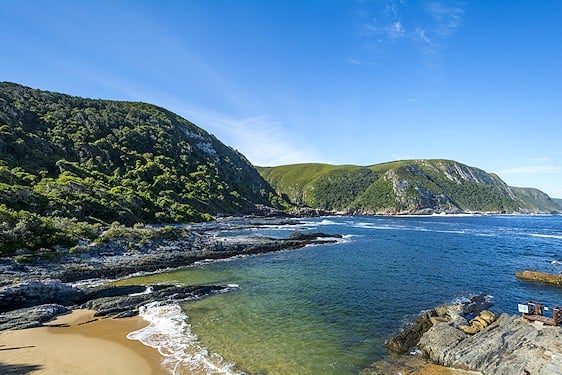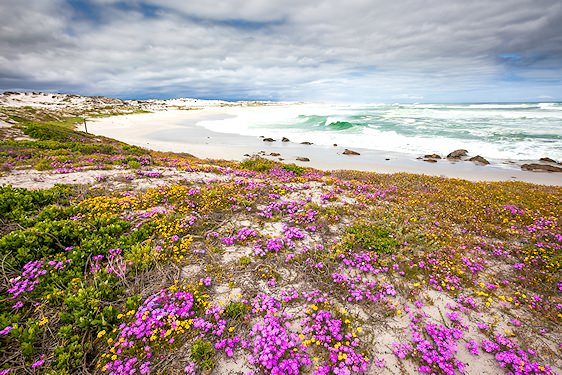South African National Parks
Help Me Plan- Home
- >
- African Travel
- >
- South Africa
- >
- National Parks
Top National Parks in South Africa
South Africa protects around twenty national parks and several celebrated provincial reserves. From Kgalagadi’s red-dune desert to iSimangaliso’s wetlands and Table Mountain’s fynbos, the variety is remarkable. The nation's protected areas are managed by both South African National Parks (SANParks) and provincial authorities like Ezemvelo KZN Wildlife. The most visited parks, which include Kruger, Addo, Hluhluwe–iMfolozi, Pilanesberg, and Table Mountain, offer superb wildlife, scenery, and family-friendly experiences.
The internationally acclaimed Kruger National Park is considered the crown jewel of South Africa’s national parks. Spanning almost 2 million hectares, it shelters exceptional biodiversity—147 mammal species and 507 bird species—across diverse habitats and a wide range of camp and lodge options.
Located in KwaZulu-Natal, Hluhluwe–iMfolozi is Africa’s oldest proclaimed nature reserve (1895) and is famed for its role in white rhino recovery. The Big Five occur here, and rolling hills create classic Zululand vistas and varied game viewing.
South Africa’s third-largest national park, Addo protects a terrestrial-to-marine mosaic and is famed for large elephant herds alongside black rhino, spotted hyena, and leopard. Covering over 180,000 hectares, it’s also a low-risk malaria area—ideal for families.
Ithala Game Reserve offers rewarding game viewing amid Ngotshe Mountains scenery and the Phongolo valley. Expect many giraffe, colorful Pride-of-De-Kaap blooms in season, and KwaZulu-Natal’s only breeding herd of tsessebe.
Part of Garden Route National Park, the Knysna Lakes area pairs forests, estuary shores, and beaches. Visitors enjoy watersports, hiking, birding, and cycling; keen birders watch for the vivid Knysna turaco in forested ravines.
South Africa’s first UNESCO World Heritage Site (1999), iSimangaliso protects dunes, coral reefs, coastal forests, lakes, and mangroves. Popular activities include scuba diving, deep-sea fishing, and scenic boat cruises on Lake St Lucia—the country’s largest estuarine system.
National Parks Travel Overview
South Africa’s national parks are well managed and protect distinctive ecosystems—from arid savannas to coastal fynbos. Reintroduction programs have restored species to former ranges, strengthening biodiversity and enriching visitor experiences across the system.

The white rhino’s recovery, driven in part by efforts at Hluhluwe–iMfolozi, is a landmark conservation story that underscores how strategic park management safeguards wildlife for future generations.
Tours and Safaris that visit National Parks
African Sky offers several pre-designed itineraries that focus on exploring South Africa’s national parks and provincial reserves with a private guide.
This extensive private overland safari visits Addo Elephant, Pilanesberg, Hluhluwe–iMfolozi, Ithala, and the Kruger National Park.
This safari explores three of the country’s finest protected areas with a private African Sky guide.
Kruger is South Africa’s premier safari area. On this private overland safari, we focus on three uniquely different regions inside the park.
Designed for families with older children, combining Kruger with a private reserve experience.
A focused private safari in southern and central Kruger led by an experienced African Sky guide.
Visit the southern Kruger National Park on a short, immersive safari with overnights in a national park camp.
Kgalagadi Transfrontier Park
A joint conservation effort between South Africa and Botswana, the Kgalagadi Transfrontier Park protects vast arid wilderness across the southern Kalahari—big skies, red dunes, and seasonal movements of antelope and predators.
View Park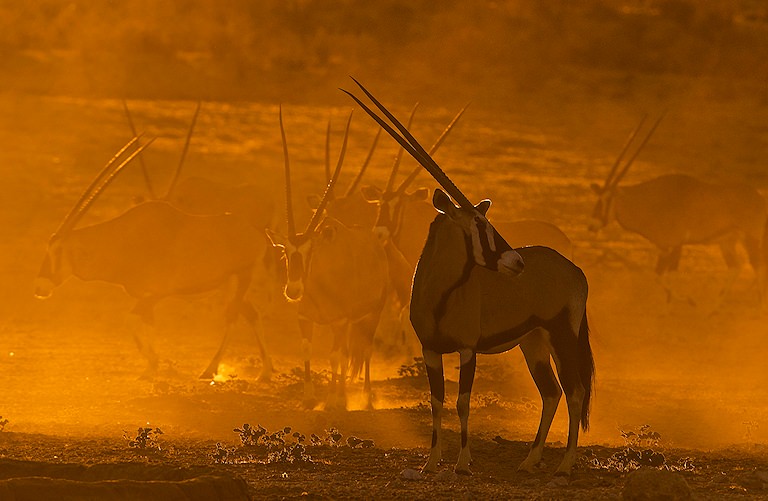
Other National Parks
These parks and reserves may be less well known than South Africa’s headline conservation areas, but each offers rewarding nature experiences and memorable landscapes.
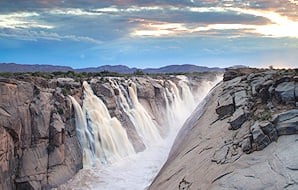
Augrabies
The park’s main attraction is the thundering 56 m Augrabies Falls, named by the Khoi for “the great noise.” Beyond the Orange River Gorge, look for Moon Rock and the Swart Rant. Wildlife is modest, but rock hyrax and klipspringer frequent the rocky, arid escarpment.
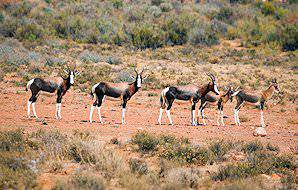
Bontebok
Set in the Cape Floral Region beneath the Langeberg, this compact park conserves bontebok—a species brought back from near-extinction. From an original remnant of 17 animals, numbers now exceed 200 here, with more across other reserves.
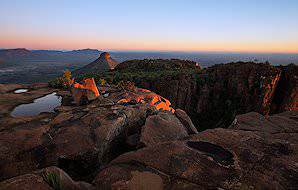
Camdeboo
Encircling Graaff-Reinet in the Karoo, Camdeboo is famed for the Valley of Desolation’s towering dolerite pillars. Activities include scenic drives, hiking, and boating on Nqweba Dam.
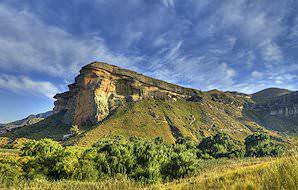
Golden Gate
In the Maluti Mountains of the Free State, Golden Gate’s sandstone cliffs glow in sunlight—most notably the Brandwag Buttress. Expect black wildebeest, eland, blesbok, oribi, springbok, and Burchell’s zebra; look skyward for bearded vulture and bald ibis.
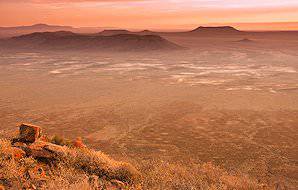
Karoo National Park
Semidesert horizons host hardy wildlife; recent reintroductions include lion, brown hyena, and Cape mountain zebra. South Africa’s national animal, the springbok, is commonly seen.
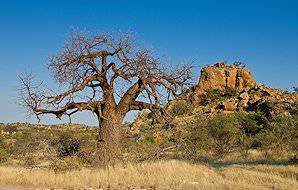
Mapungubwe
At the junction with Botswana and Zimbabwe, Mapungubwe safeguards an Iron Age cultural landscape (UNESCO listed) and supports elephant, giraffe, white rhino, eland, gemsbok, and other antelope.
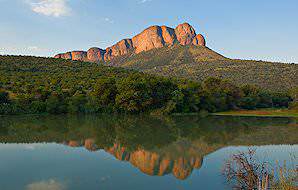
Marakele
In the Waterberg, Marakele’s habitats support diverse wildlife, including the largest colony of endangered Cape vultures. Elephant, rhino, lion, and leopard occur in this malaria-free reserve, alongside notably handsome kudu.
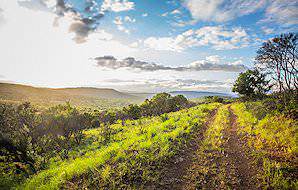
Mkuze
Bordered by the Mkhuze River on the Lebombo foothills, this reserve’s wetlands, woodlands, and riverine forests make a birding paradise. Mammals include black and white rhino, elephant, giraffe, nyala, blue wildebeest, warthog, eland, hippo, impala, and kudu.
uKhahlamba-Drakensberg Park
The Drakensberg mountains offer hiking, rock-art sites, and sweeping amphitheater vistas. Adventurous travelers can tackle high passes, while relaxed itineraries focus on easy trails, viewpoints, and cultural stops.
View Park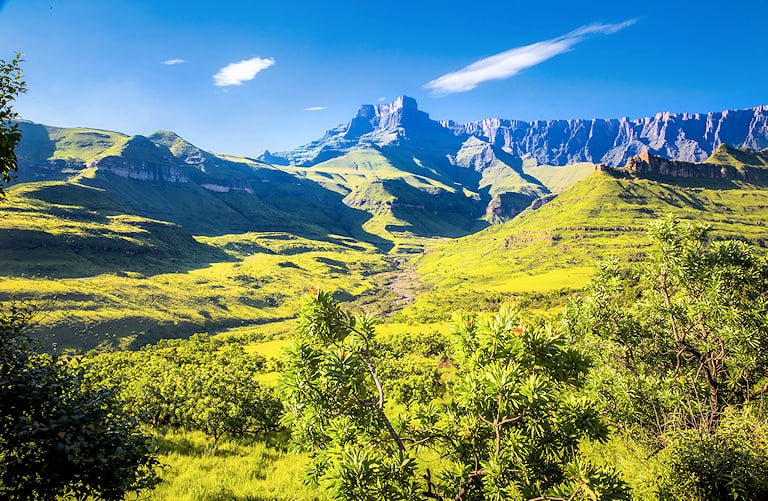
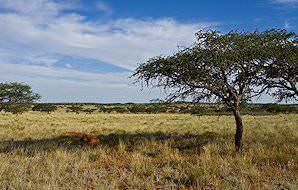
Mokala
Vast sandy plains, dolerite hills, and semidesert terrain define one of South Africa’s newer national parks. Camelthorn trees are culturally significant here; the park lies south of Kimberley across koppieveld and open plains.
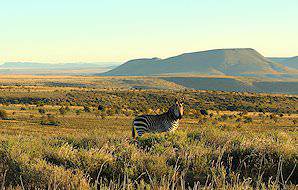
Mountain Zebra
Twenty-eight thousand hectares in the Eastern Cape protect the once-threatened Cape mountain zebra—now thriving thanks to concerted conservation. Endangered black rhino and cheetah also occur here.
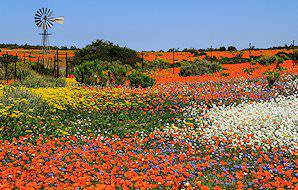
Namaqua
Part of the Succulent Karoo biome, Namaqua erupts into color each spring; more than 1,000 of roughly 3,500 plant species are endemic. Outside bloom season, it’s a stark, beautiful semidesert landscape.
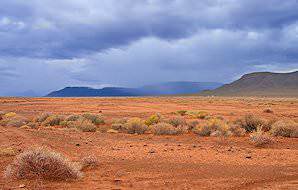
Tankwa Karoo
Flat, arid vistas and immense night skies make Tankwa a premier stargazing destination. Wildlife is sparse but includes springbok, gemsbok, and red hartebeest, with frequent reptile sightings.
Pilanesberg National Park
Pilanesberg lies less than two hours from Pretoria and Johannesburg, adjoining Sun City. Set in an ancient volcanic crater, it is home to all of Africa’s Big Five and makes an easy weekend wildlife escape.
View Park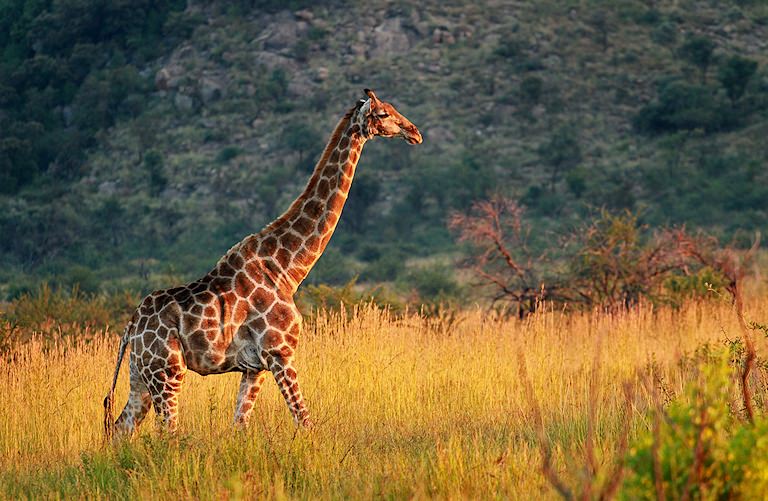
Coastal National Parks
South Africa’s coastal parks protect beaches, dunes, lagoons, and rich offshore ecosystems in the Indian and Atlantic Oceans.
At Africa’s southernmost tip where the Indian and Atlantic meet, Agulhas offers shipwreck history, dramatic coastlines, and seasonal Southern Right whale sightings. The African black oystercatcher occurs year-round along rocky shores.
Now part of Garden Route National Park, Tsitsikamma pairs rugged coastline and indigenous forests with standout trails like the Otter. Offshore, dolphins and whales are often seen; forest paths may reveal badger, genet, or African wildcat.
A famed Ramsar wetland for migratory shorebirds, West Coast NP features hides like Geelbek on the Langebaan Lagoon. Expect immaculate beaches, spring wildflowers, and photogenic turquoise waters.
Table Mountain National Park
The Cape Peninsula’s protected landscapes include scenic trails, pristine beaches, and rich fynbos diversity. Table Mountain National Park encompasses headline sites like Cape Point and the Cape of Good Hope Nature Reserve.
View Park